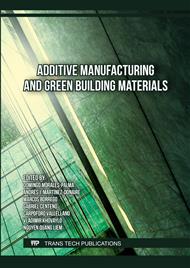p.33
p.41
p.51
p.61
p.71
p.81
p.91
p.99
p.107
Methodology for the Acoustic Analysis of Acoustic Guitar Top Plates Designs by Additive Manufacturing
Abstract:
Nowadays, tools such as Additive Manufacturing (AM) contribute directly to an increase in the value of Industrial Design through the development of new products focused on customization. Specifically, the acoustic guitar is a good example of this, because it is a complex product to study due to the great variety of possible designs depending on the materials and the way they are obtained, which has repercussions on the final sound of the instrument. Due to the above, this paper develops a methodology for the study of the acoustic response depending on the design of an acoustic guitar using AM with Polylactic Acid (PLA) material. The methodology is divided into two types of tests: an acoustic test to capture the frequencies emitted by transmitting a sweep of frequencies across the audible spectrum to the soundboard, and another to visualize the vibrational patterns at five specific harmonic frequencies of the guitar by analyzing the movement of the soundboard and the influence of the bracing. This second test includes the PLA designed top with a reinforcement structure in its soundboard and a case in order to compare this design with a wooden guitar of the same size whose top has no reinforcement at all. From the tests carried out, it can be seen that the acoustics recorded by a top made of PLA can provide a good acoustic response compared to a wooden guitar, giving the possibility to create customized guitars according to the musician's tastes.
Info:
Periodical:
Pages:
71-79
Citation:
Online since:
September 2023
Keywords:
Price:
Сopyright:
© 2023 Trans Tech Publications Ltd. All Rights Reserved
Share:
Citation:



